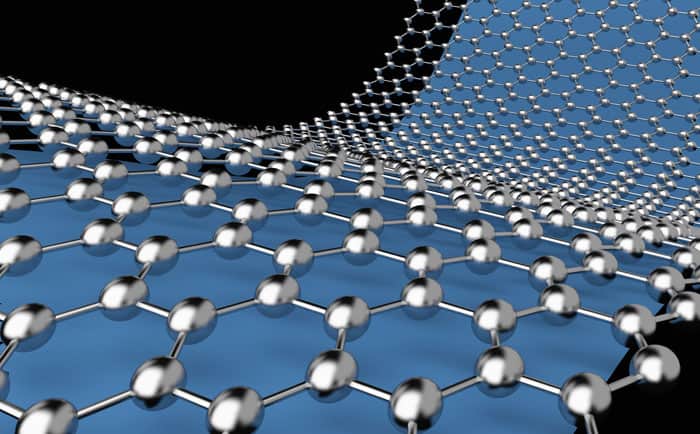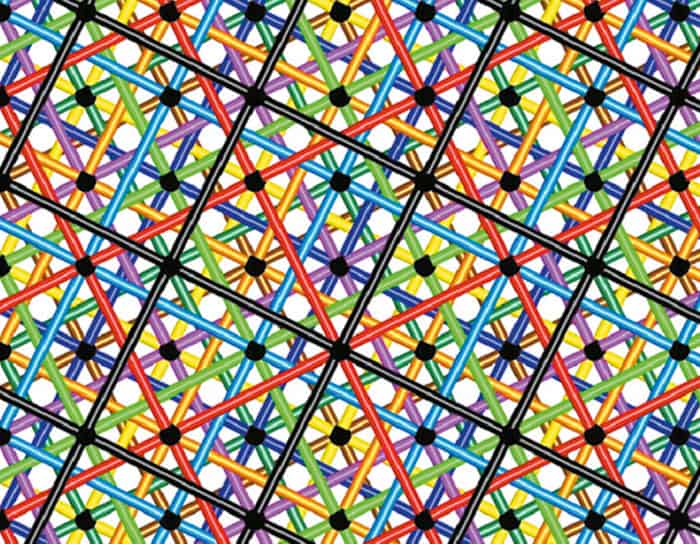
So 2013 will go down as the year that the Nobel Prize for Physics went to Peter Higgs and François Englert for their theory of how some particles acquire mass. It was an award that had been widely expected, following the discovery of a particle that looks pretty much like the Higgs boson at CERN in 2012. But the prize was not without controversy – several other theorists missed out, while the announcement itself was unexpectedly delayed by an hour, hinting that the Swedish Academy of Sciences required the extra time to thrash out who exactly to honour.
But what of next year? What will be the key events in physics and who will have taken the accolades in 12 months’ time?
Over at CERN, physicists and engineers will still be basking in the glory of this year’s Nobel prize, but they will also be hard at work upgrading the Large Hadron Collider (LHC) and its main experiments ATLAS and CMS. The collider, which was turned off in February at the end of its first main run, is currently undergoing a refit that will let it smash protons together with a total energy of 13 TeV – almost double the previous value – when it switches back on in 2015.
But there will be lots of new activities at CERN too. The accelerators that feed protons into the LHC – the Proton Synchrotron (PS) and the Super Proton Synchrotron (SPS) – will both be fired up in the second half of 2014, enabling several entirely new experiments to come on line at the Geneva lab. One intriguing new project is NA62, so named because it is located in CERN’s “North Area” and 62 is the next number up. Like CERN’s main experiments, it will be seeking “new physics”, but it will use a very different approach. Instead of smashing protons together and scouring through the vast numbers of particles flying off in all directions, NA62 will instead search for tiny “quantum fluctuations” in one particular type of particle decay.
The experiment will involve precise measurements of how often a positively charged kaon decays into to a positively charged pion plus a neutrino/antineutrino pair. This decay might seem arcane but it is interesting because hitherto unknown particles not predicted by the Standard Model of particle physics – our current best understanding of the sub-atomic world – could take part in the process. The kaons will be created by firing protons from the SPS into a 40 cm-long beryllium target to create a beam of some 800 million charged particles every second. Most will be pions and protons, but about 6% of the particles will be the kaons of interest.
As the Standard Model predicts exactly how fast these kaons should decay, any difference between the measured and predicted decay rate would reveal the existence of new particles, such as “supersymmetric” particles that have been predicted by certain alternative models of particle physics. The only snag – and it is a big one – is that measuring the decay is far from easy, Being so rare, the probability of it happening is just about 1 in 10 billion. Keep an eye out for more details – and a special video – about NA62 in Physics World early next year
CERN peers into the antiworld
NA62 is not the only novel project starting up at CERN in 2014. The year will also see two new antimatter experiments, both exploiting CERN’s existing Antiproton Decelerator (AD). This facility fires protons from the PS into a block of metal to create high-energy antiprotons that are then slowed. Antiprotons should be on tap once again from August and one of the AD’s new experiments is AEGIS, which is the first specifically designed to measure the Earth’s gravitational pull on antimatter. It will measure the vertical distance that a beam of antihydrogen atoms falls as it travels a set horizontal distance – with even the tiniest deviation from how ordinary matter behaves possibly shedding light on the mystery of why the universe has so little antimatter.
Also getting into its stride at the AD is BASE, which will trap a single antiproton using magnetic and electric fields to make the most precise measurement ever of its magnetic moment. Researchers will also make the same measurements on protons, with any difference implying that charge–parity–time (CPT) symmetry has been violated, which would also point to physics beyond the Standard Model.
To the Moon, Mars and beyond

Away from CERN, 2014 will see a series of fascinating missions in space science and astronomy bearing fruit. China’s Jade Rabbit rover, which landed on the Moon earlier this month, will spend the first part of the year surveying the lunar surface and its geological resources, including the make up of the Moon’s soil. Autumn will be even more intriguing, with NASA’s Mars Atmosphere and Volatile Evolution (MAVEN) mission going into orbit around the red planet on 22 September and the Indian Space Research Organisation’s Mangalyaan probe arriving just two days later.
US astronomers will also be hoping for good luck in July, which will see NASA finally launch a replacement for its $270m Orbiting Carbon Observatory (OCO). The mission originally failed shortly after take-off in February 2009, meaning that the agency’s attempts to produce maps of the Earth’s carbon sources and sinks lay in ruins. Such information is essential for environmental scientists to gain a better understanding of climate change. Dubbed OCO-2, the new craft is a replica of the original and is scheduled to take off on board a Delta II rocket.
As for the European Space Agency (ESA), it too has a busy year lined up. Initial data from its Gaia star-mapping mission will arrive, while the first of its Earth-observation Sentinel craft is due to take off in the spring, with a follow-up mission later in the year. Among other objectives, the craft will study sea ice in the Arctic and map land surfaces, including forests, water and soil. On 24 November, meanwhile, ESA’s Rosetta craft will rendezvous – after a journey that has lasted more than 10 years – with Comet 67P/Churyumov-Gerasimenko. If the docking is a success, it will be the first mission ever to orbit and land on a comet.
Beyond our solar system, we can expect the stream of new findings about extra-solar planets to continue, with hints – but no definite sightings – of Earth-like planets in the “goldilocks” zone continuing to appear. As far as studies of the whole universe are concerned, physicists will spend 2014 trawling through the reams of data taken by ESA’s Planck mission. Although it formally stopped observing the cosmic microwave background in October, Planck’s treasure trove of information is sure to reveal more secrets about the make up of the universe. Keep an eye out for a great feature article on the mission in the January issue of Physics World by Peter Coles of the University of Sussex.
We can also expect more hints about dark matter appearing in 2014, particularly from the Large Underground Xenon (LUX) detector, which lies 1500 m beneath the Black Hills at the Sanford Underground Research Facility in South Dakota, US. The LUX team revealed its first data in October this year and, although no positive signs of dark matter were seen, its members will spend 2014 refining their experiments for a future 300-day search for weakly interacting massive particles (WIMPs), which are a leading candidate for dark matter.
Graphene goes commercial

But next year, as every year, most physicists will be doing work that is much more down to Earth – from medical physics and optics to nanotechnology and semiconductors. In particular, 2014 will see a continuing stream of exciting results using graphene – the one-atom-thick sheet of carbon that is not only the strongest material ever discovered, but can also carry currents with a density one million times that of copper. Our prediction is that this material will be used for the first time in the touchscreen of a commercially available smartphone – either from Samsung or Apple.
The device will not look or feel too different to existing phones, as the graphene will merely replace the conventional indium-tin-oxide electrode. However, a phone with a graphene electrode in its touchscreen could kick-start the next transformation of the display industry, which will eventually see fully flexible and bendable screens made largely from graphene becoming the norm. We can therefore expect the further development of a “graphene ecosystem” during 2014, thanks to a “perfect storm” of companies making graphene of the right amount and quality, engineers designing products people want and researchers transferring their know-how from the research lab to the marketplace.
Another trend that looks set to blossom in 2014 will be the use of “Rydberg states” to create interactions between photons in a collection of atoms cooled to temperatures of near absolute zero. Such states were already used this year to create the first-ever “molecules” of light, and we can expect more breakthroughs of this type next year. A Rydberg state is created whenever a photon of laser light interacts with ultracold atoms to form a highly excited electron that is shared between 10 or more nearby atoms. But as other Rydberg states cannot be created nearby, any additional photon that comes along ends up interacting with the first.
Nobel dreams
So what of the people and personalities in physics? Our bet is that the Nobel Prize for Physics will go to work in the field of quantum computing and communication – with Anton Zeilinger being our pick for the award. This area has been so rich with results in recent years that surely its time has come to be honoured in this way. Yet it is still an embarrassment for physics that only two women have ever won a Nobel Prize for Physics – Marie Curie in 1903 and Marie Goeppert-Mayer in 1963 – and a third is unlikely to be added in 2014.
Surely the time has come for the archives to be opened up to scrutiny
While there is no question of any sexism among the Nobel Committee for Physics, its members can only choose from researchers who have been put forward for a prize. Unfortunately, we just do not know if those making the nominations are biased, given that the archives detailing each year’s award remain, by convention, closed for a period of 50 years. Surely the time has come for the archives to be opened up to scrutiny immediately after a Nobel prize is awarded?
Meanwhile, in December 2014 CERN’s Council will choose the next director-general to take over from Rolf-Dieter Heuer at the end of 2015. Heuer has been at the lab’s helm at a thrilling period in the lab’s history and his successor – whoever they may be – will have a hard act to follow. In addition to overseeing the start of the LHC, Heuer has been in charge as the SCOAP3 initiative has finally come to fruition, which from next year will allow particle physicists funded by it to make their work immediately free to read online upon publication in 10 participating journals. Costing about €5m a year, SCOAP3 will allow about 60% of all papers in particle physics to become “open access”.
The crystal ball

Finally, physics would not be physics without a look back at past glories, and the most notable anniversary in 2014 will be the centenary of the German physicist Max von Laue winning the 1914 Nobel Prize for Physics for his discovery, two years earlier, of the diffraction of X-rays by crystals. X-ray diffraction is a hugely valuable experimental tool, enabling researchers to elucidate the structure of thousands of crystals, most famously the double-helix nature of DNA. To increase awareness of the field, 2014 has been designated the International Year of Crystallography by the United Nations Education, Scientific and Cultural Organisation (UNESCO) and the International Union of Crystallography. A full programme of events has been lined up, kicking off with an opening ceremony at UNESCO headquarters in Paris on 20–21 January.
Other anniversaries in 2014 include the 50th anniversary of the publication of Richard Feynman’s famous lectures on physics and the 50th anniversary of the idea of quarks – the tiny entities that make up protons, neutrons and some other sub-atomic particles. The concept was proposed, independently, by Murray Gell-Mann and George Zweig in an attempt to make sense of the “zoo” of particles that had been uncovered in the 1950s and early 1960s. Gell-Mann and Zweig saw quarks as just a mathematical explanation of particle masses, but physicists now regard them as real physical objects.
As for Physics World, which is published by the Institute of Physics (IOP), we have special issues coming up on innovations in physics teaching (March), the dark universe (July) and how to turn physics ideas from the lab and into real products (November). All IOP members can read the magazine online or through our apps, and, if you are not already an IOP member, do not forget to join to get instant access to every issue. We will also be publishing reports on Brazil (April) and India (December), as well as focus issues on nanotechnology (May), optics and lasers (June), vacuum technology (August) and big science (September). You can also expect to see an expanded audio and video programme, including more Google hangouts.
But the beauty of physics is that you never quite know what is round the corner. This year Physics World awarded its Breakthrough of the Year prize – now in its fifth year – to the IceCube South Pole Neutrino Observatory for making the first observations of high-energy cosmic neutrinos. As for who will win next year, it really is anybody’s guess.
- Happy with our predictions? Annoyed at something we missed? Tell us what you think by commenting below.



